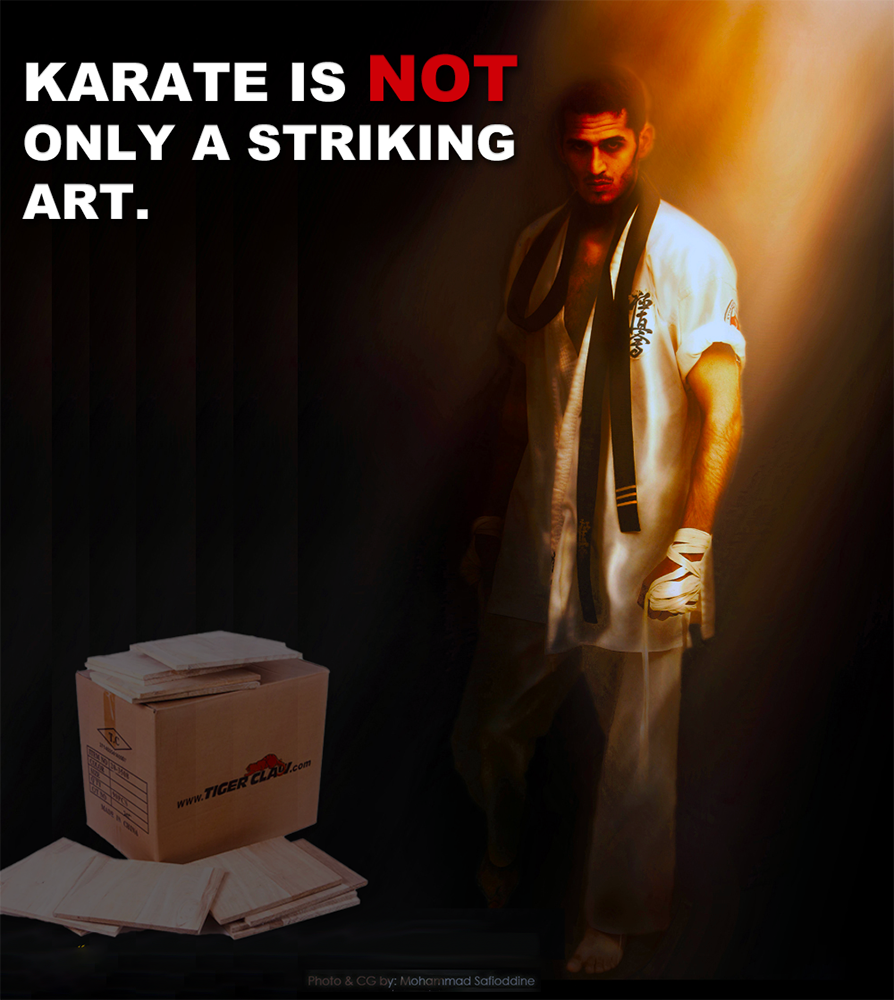
Karate is NOT only a striking art.
Posted by ADAM CARTER on OCT 3, 2022

Karate is NOT only a striking art.
When karate began to move across the world in the early to mid 1950’s the training emphasis was almost exclusively on striking. Kata was not properly understood.
Even today you can still find karate dojo that teach kata without ‘bunkai’ (analysis/breakdown). Those first generation Western practitioners then went on to perpetuate the bias of karate as a ballistic art. Grappling, throwing and joint locks were not displayed clearly.
I know several instructors today that have said to me that new students don’t come into the dojo to learn kata….. This shows a total misunderstanding of the nature and essence of kata, and indeed karate itself.
It has taken decades to get old school Western teachers to shift their training focus to include and place a higher emphasis on kata and what they contain. Some never will, and those people strongly believe that striking is the only way.
As karate was primarily spread to other parts of the world by Japanese instructors traveling abroad, the challenges of explaining the complexities of grappling, locks, and throws etc. were compounded by language barriers, and led to those aspects quickly being left out. This meant instructors traveling internationally often did not have ready explanations grounded in grappling or close-combat, and instead resorted to (sometimes quite contrived) explanations that highlighted their strongest skill-set: striking.
All of this seems to have combined to build a perception that karate is only a striking art, to the exclusion of grappling, throwing, or the use of locks.
When karate was brought from Okinawa to mainland Japan, it adopted the Japanese mentality of “one strike decides all” philosophy, based on some of the other Japanese martial arts such as Kendo etc. One lightening quick blow would decide everything. So while the underlying kata do indeed show throwing and joint manipulation techniques, the emphasis was not on grappling with the opponent, but in defeating him in the blink of an eye with techniques that have been optimized for maximum destructive force.
In Japan after the 2nd world war, the public school system heavily encouraged sport. Karate became focussed on solo kata competition and striking focused sparring.
Many forms of ‘kumite’, such as ‘ippon’, ‘sanbon’ etc. are taught, with the focus on punch, kick, block, which bare no resemblance to realism in the slightest. Even if the application to kata is taught, some of those movements are very confusing, or the application is very obtuse or sketchy.
In many schools, I have witnessed the kata being performed as truly awful and it doesn’t clearly display anything to the layman. And that’s because practically all their martial arts are horrifically misunderstood and the majority of their students poorly prepared.
Essentially, I believe it is about what the person studying karate-do is seeking….. self-preservation, or fame. However, through the use of the arena of competition to measure the ability of karate practitioners and instructors, true karate-do gets lost and fighting takes over, whilst the true defensive techniques and principles contained within the kata virtually vanish.
![]() Photo Credit: Image by MScg – Deviant Art
Photo Credit: Image by MScg – Deviant Art
